To clean a polyurethane brush, squeeze as much sealer off it as you can, soak the brush into a bucket filled with paint thinner (mineral spirits or soapy water), take it off, and dry it before re-using.
You don’t need to clean the brush between coats of polyurethane — if the wait time is less than 48 hours you can store it in a fridge.
Why Should You Clean a Polyurethane Brush?
You should clean a polyurethane brush to make it last longer, prevent colors from mixing, save polyurethane (not waste it), and make the next application easier.
Cleaning a polyurethane brush will make it last longer as it will remove the sticky residue on the paintbrush. If you don’t clean it, the residue will dry and harden and this can cause the bristles of the brush to dry out.
1. To Prevent Color Mixing On Your Next Painting Task.
If you don’t clean a paintbrush after using it to apply tinted polyurethane, the sealer color will dissolve and affect the color of your next paint job.
2. To Save Polyurethane
A paintbrush will take more sealer than needed from the can. After painting you can squeeze back the polyurethane into the can and reuse it to prevent wastage.
3. For Easy Paint Application Next Time
Cleaning a paintbrush will make the next paint application easier and will save you time as you don’t need to clean it the next time.
What Can You Use To Clean Polyurethane Brushes?
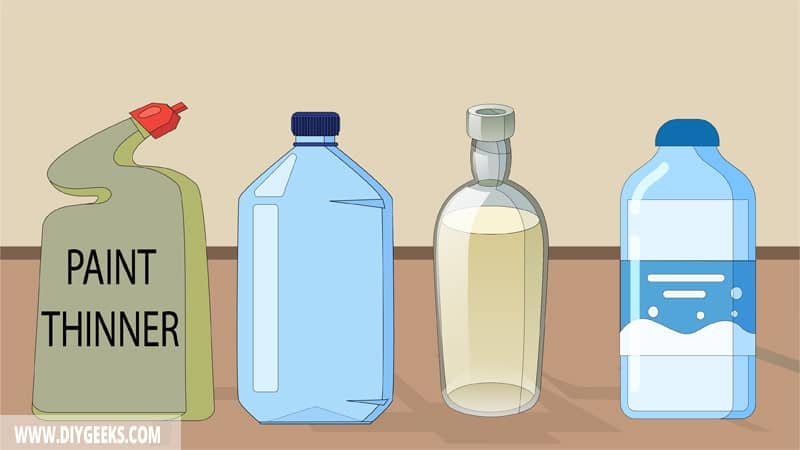
To clean polyurethane brushes you can use solvents or paint thinners. To clean a water-based polyurethane brush use soapy water. To clean an oil-based polyurethane brush, use mineral spirits.
1. Mineral Spirits
Use mineral spirits to remove oil-based polyurethane from a brush. Mineral spirits is strong enough to dissolve oils and particles of the sealer.
It can also remove water-based polyurethane, but it’s too strong and there are better alternatives for that.
Don’t soak the brush in mineral spirits for too long as it can damage it.
2. Water
Use soapy water to remove water-based polyurethane from a paintbrush. Water-based polyurethane uses water as its solvent — if you add water the sealer will get removed or washed off (if it hasn’t dried yet).
3. Acetone
Use acetone to clean both, oil-based and water-based polyurethane. Acetone is a natural paint thinner (or remover).
Use acetone to clean or wipe the brush only, don’t soak it into acetone as it can soften the plastic parts and lose its shape.
4. Rubbing Alcohol
Use rubbing alcohol to remove water-based polyurethane from a brush. Soak the brush into a bucket of rubbing alcohol and leave it for a few minutes.
5. Paint Thinner
Use paint thinner to remove polyurethane from a brush, but don’t soak the brush into paint thinner for more than 30 seconds as it can cause corrosion.
Paint thinners are made of a combination of different chemicals, including acetone, xylene, mineral spirits, and turpentine.
Always rinse the brush with water after using paint thinner to clean it.
Other products you can use are listed below.
- Turpentine (for oil-based)
- Denatured Alcohol (for water-based)
- Warm Soapy Water (for water-based)
- Lacquer Thinner (for oil-based. Don’t soak the brush in lacquer thinner)
- White Spirits (For water-based).
How To Clean a Polyurethane Brush?
To clean a polyurethane brush do the following.
- Squeeze the Excess.
- Fill A Bucket Halfway With Paint Thinner.
- Soak and Swirl the Brush.
- Use a Soft Toothbrush.
- Rinse With Clean Water.
- Leave It To Dry.
The tools you need for this project are listed below.
- An empty bucket
- Water
- Paint thinner
- A pair of gloves
- Dish soap
- A soft toothbrush
1. Squeeze the Excess
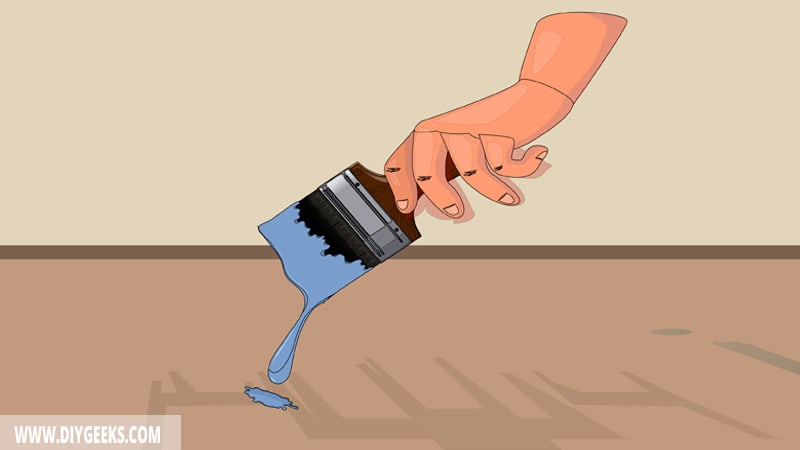
Squeeze as much polyurethane from the brush as you can.
To do this, wear gloves and manually squeeze it out. You can squeeze the excess back into the container and use it later.
You must be careful while squeezing as you can ruin the shape of the brush.
2. Fill A Bucket Halfway With Paint Thinner
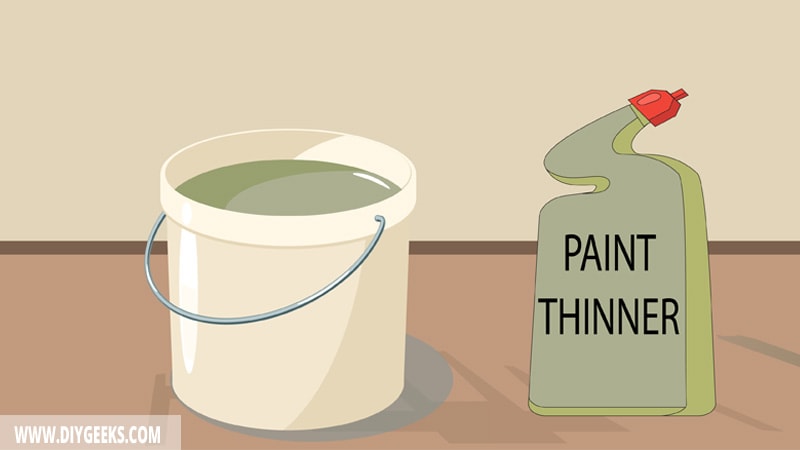
For water-based polyurethane, use water as a paint thinner. For oil-based polyurethane, use mineral spirits. You need to pour enough paint thinner into the bucket to remove it.
Since mineral spirits is expensive, dilute it with water. This way, you can fill half of a bucket without wasting too much of it. When mixing mineral spirits with water, use a ratio of 2:1 (2 parts mineral spirits 1 part water). If you use more water than mineral spirits, the mixture won’t be strong enough.
3. Soak and Swirl the Brush
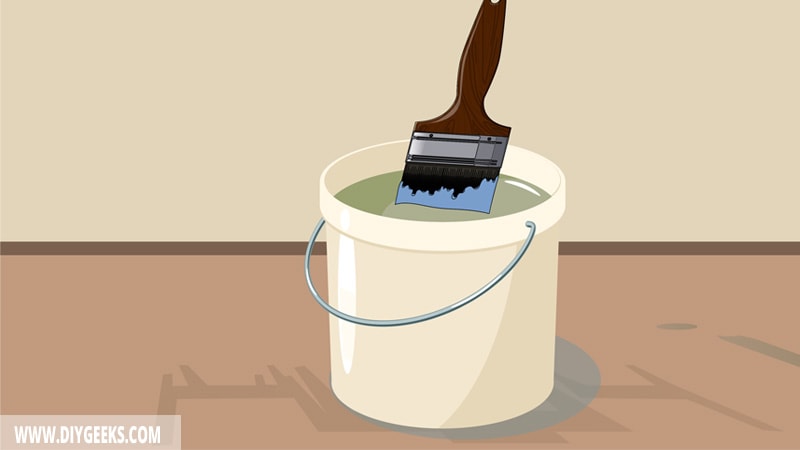
Soak the brush in the bucket filled with paint thinner for 10 minutes. After, swirl it inside the bucket to shake off the loose sealer.
4. Use a Soft Toothbrush
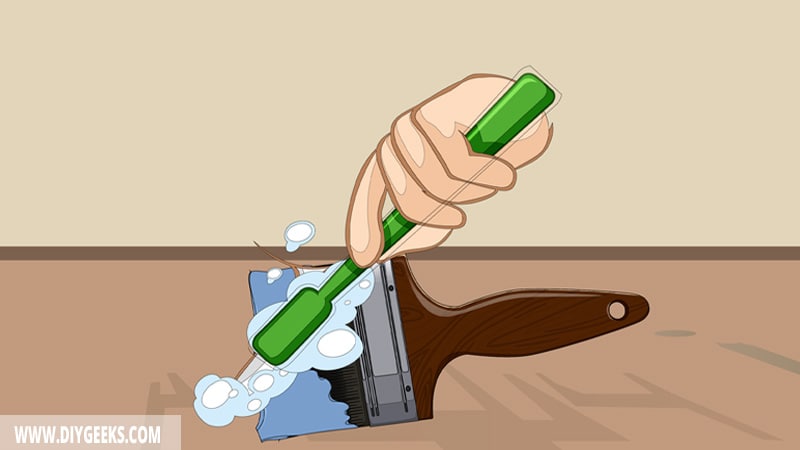
After 10 minutes of soaking the paintbrush in the paint thinner, take it out and inspect it. If you notice stuck polyurethane residue between bristles, use a soft toothbrush to remove it.
For tough or stubborn water-based residue, add dish soap to water and use soapy water to remove it. For oil-based residue, add a few drops of mineral spirit directly to it and take it out with a toothbrush.
5. Rinse With Clean Water
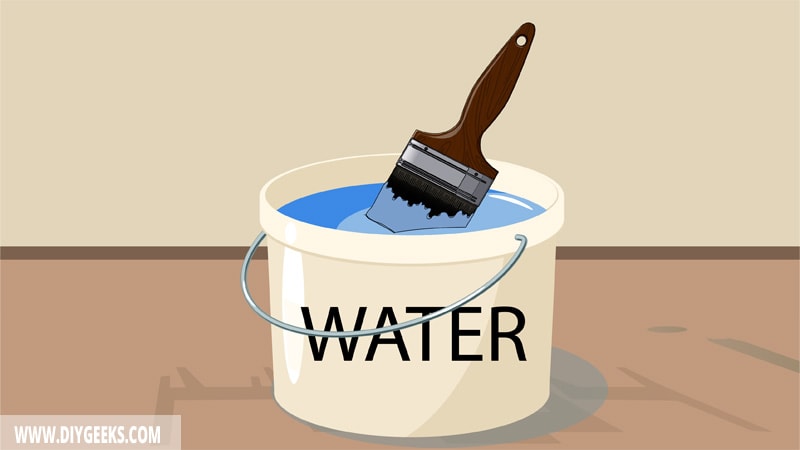
Soak the paintbrush into a bucket filled with water — this removes leftovers and paint thinner from the brush.
This is an important step, especially if you use a strong remover.
6. Leave It To Dry
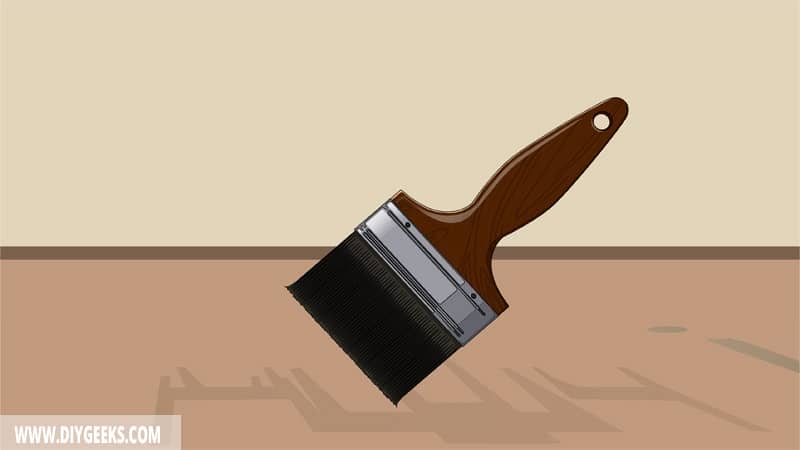
Let the brush dry, then inspect it before storing it properly. If there’s no sealer left, you can store it.
Do You Need To Clean Polyurethane Brush Between Coats?
You don’t need to clean a polyurethane brush between coats. Instead, you can seal it in a plastic bag and place the bag in the fridge for a few hours until it’s time to re-coat.
The brush must have some polyurethane left before being sealed off in the plastic bag. This will keep it fresh and ready for application even after hours of waiting for the existing coat to dry.
But, if the wait time is more than 48 hours, you must clean it between coats. On average, you must wait 6-8 hours before you re-coat it. Oil-based polyurethane can take up to 24 hours to dry before re-coating it.
Related Read: Can You Thin Polyurethane Paint?


